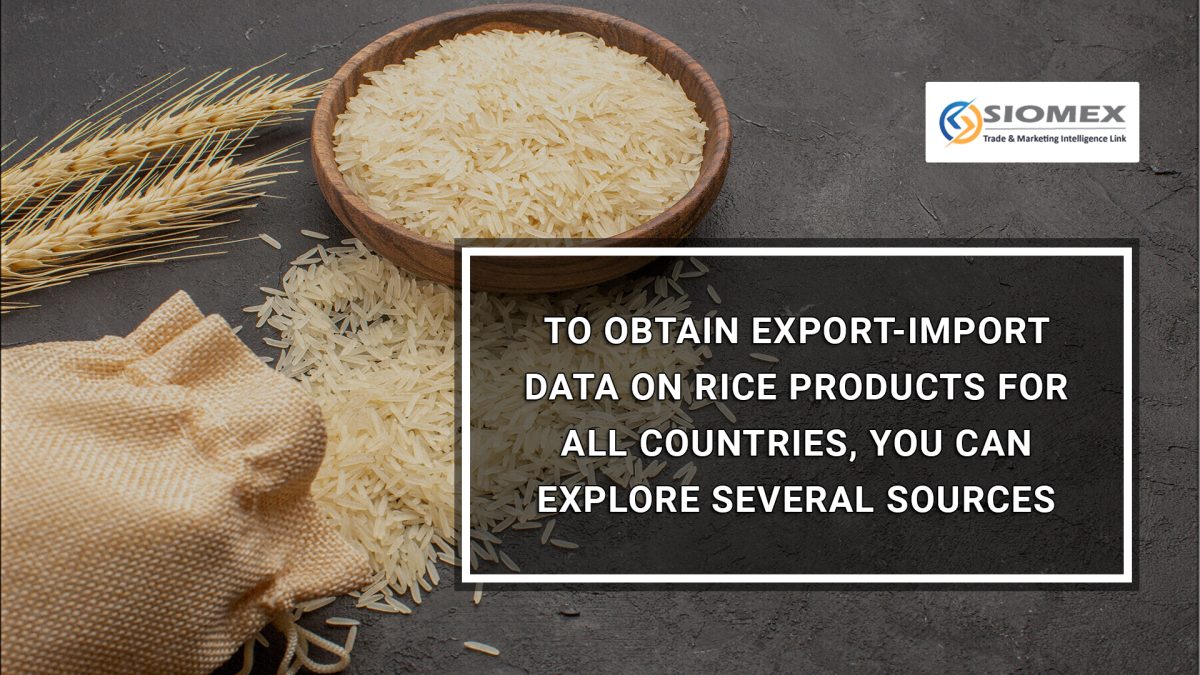
How to get export import data on rice products for all country
Rice is a staple food for millions of people around the world and its export and import are essential for maintaining food security and economic growth.
If you are someone who wants to know how to get export and import data on rice products for all countries then this post is for you.
This post will provide a detailed guide on how to export and import rice products for all countries covering everything from regulations and procedures to marketing strategy
- Understanding the Rice Industry
- Rice is the world’s most important cereal crop providing food for over half of the global population.
- The rice industry is characterized by its diversity, with over 600 varieties of rice and numerous processing methods.
- Major rice producing countries include China, India, the United States, and Bangladesh accounting for around 70% of global rice production.
- Exporting Rice Products
- Choose the right rice variety: Different countries have specific preferences for rice types, such as long-grain, medium-grain, or short-grain.
- Ensure compliance with export regulations: Each country has its own set of rules and regulations for exporting rice products, such as food safety standards,labeling requirements and export taxes.
- Packaging and presentation: Pack your rice products in attractive and durable packaging to appeal to the target market.
- Marketing strategies: Develop effective marketing strategies to promote your rice products in the export market, such as online advertising, trade shows, and partnerships with local distributors.
- Importing Rice Products:
- Identify potential suppliers: Research and establish relationships with reliable rice suppliers from different countries to ensure a steady supply of high-quality products.
- Understand import regulations: Familiarize yourself with the import regulations and requirements of your country, such as import taxes, labeling, and food safety standards.
- Quality control: Conduct thorough quality control checks on the imported rice products to ensure they meet your company’s standards.
- Storage and distribution: Store the rice products in appropriate conditions to maintain their quality and distribute them to your customers through various channels, such as supermarkets, wholesalers, and e-commerce platforms.
- Managing Risks and Challenges
- Fluctuating prices: The import export data shows us that rice prices are influenced by factors such as weather conditions, supply and demand, and global economic trends. To mitigate price risks, consider hedging strategies or diversifying your product portfolio.
- Trade restrictions: Countries may impose trade restrictions on rice imports due to domestic rice production concerns or to protect their industries. Keep up to date with the latest trade policies and potential changes.
- Quality issues: Ensure your rice products meet the required quality standards to avoid qualityrelated issues that could damage your reputation and sales.
Conclusion
Exporting and importing rice products is a crucial aspect of the global food supply chain.
By understanding the industry, complying with regulations and developing effective marketing strategies businesses can successfully navigate the complexities of the rice trade and contribute to food security and economic growth.
If you are looking for more information like this then you should visit Siomex
